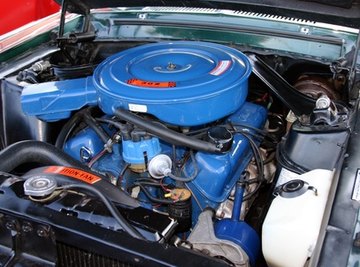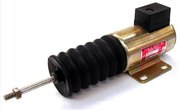
A solenoid consists of a helix of wire wrapped around an iron or steel core. The core becomes magnetized when electrical current passes through the coil. This is the basis of solenoid pumps, which are often used as metering pumps in water treatment and chemical processing plants.
Operation
Solenoid pumps are one of the simplest types of pumps because they have very few moving parts. When current is applied to a solenoid pump, the electromagnetic core moves against a spring to slide a diaphragm into the discharge position. When current is removed, the diaphragm slides back into the suction position.
Dead Head
Solenoid pumps are designed so the electromagnet cannot move the diaphragm against a resistant pressure of gas or liquid (backpressure) that would cause it to fail. They can pump against a dead head, or infinite backpressure, when discharge is closed off.
Limitations
There is a physical limit on the size of solenoids that can be built which limits the flow rate and pressure that is possible with a solenoid pump. Typically, solenoid pumps can pump up to 20 gallons per hour at 30 pounds per square inch.
References
About the Author
A full-time writer since 2006, David Dunning is a professional freelancer specializing in creative non-fiction. His work has appeared in "Golf Monthly," "Celtic Heritage," "Best of British" and numerous other magazines, as well as in the book "Defining Moments in History." Dunning has a Master of Science in computer science from the University of Kent.
Photo Credits
Auto Engine image by Andrew Breeden from Fotolia.com
